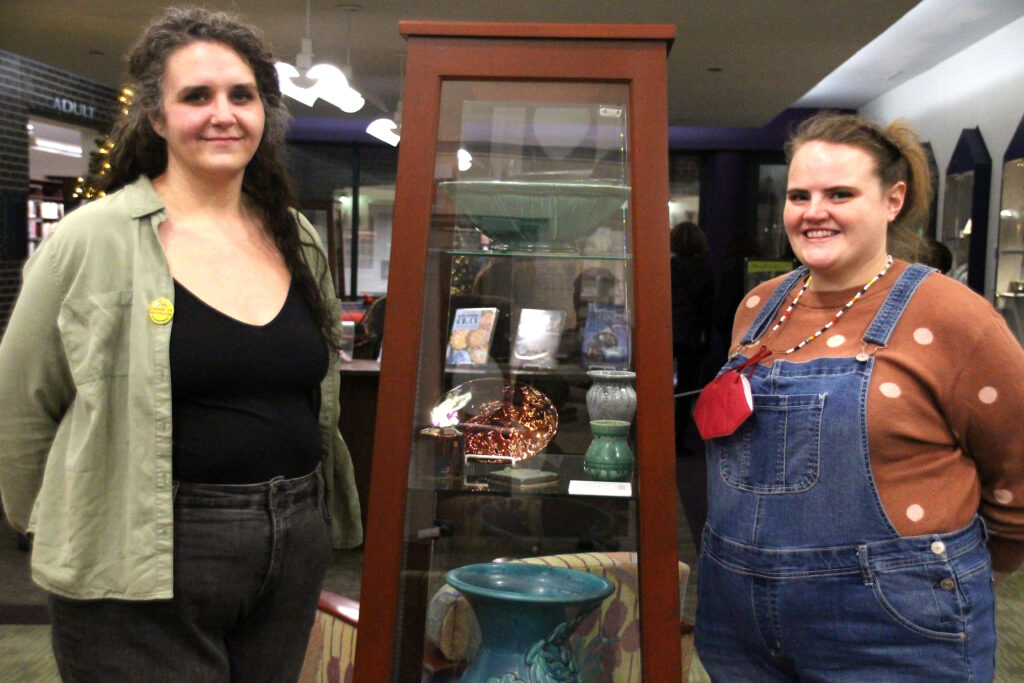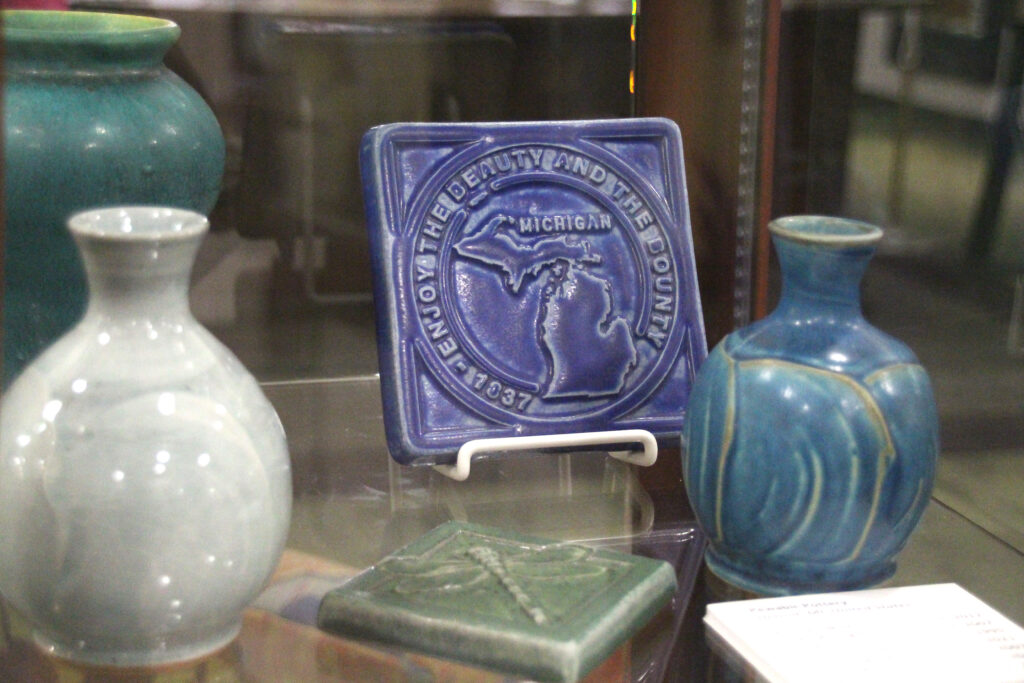
By Dean Vaglia
Leader Staff Writer
Known for architectural tiling and hand-made decor, Pewabic Pottery has been a staple of the Michigan arts scene for over 100 years. With the Oxford Public Library highlighting the ceramic arts, Pewabic Education Director Annie Dennis stopped by on Jan. 26 to tell the history of the studio.
In 1903, Mary Chase Perry and Horace Caulkins founded Pewabic in Detroit’s Brush Park neighborhood. Perry was a china painter from the Upper Peninsula while Caulkins ran a dental ceramics kiln company before shifting focus to artistic ceramics. Both were well respected in their fields by the time of their partnership, which began with Perry working as a saleswoman showing off Caulkins’ kilns. Perry wanted to experiment with ceramics, and the duo started a studio in a Brush Park stable house.
Perry’s earliest ceramics featured simple matte colors and floral embossing for vases, bowls and lamps. The early pieces follow the sensibilities of the Arts and Crafts movement of the time, which focused heavily on natural colors, forms and materials.
“The Arts and Crafts movement, coming just off of the ornate Gilded Age of the Victorian era, really loved honesty in material and craftsmanship and wood and things like that,” Dennis said. “Mary said early on that she wanted her glazes to look like glaze.”
As more interest was directed at the studio, Pewabic moved to the then-outskirts of Detroit in 1907 to a purpose-built Tudor Revival-style pottery studio on Jefferson Ave. Four staff members were hired and worked with Pewabic for their entire careers, allowing Perry to shift focus from producing pottery to glaze experimentation.
“What really put her on the map was the iridescent glazes,” Dennis said.
In order to make the shimmering glazes Pewabic would come to be known for, Perry shot kerosene and other chemicals like lead and uranium into the kiln at peak temperature, the resulting reaction creaking the iconic irradiance. Original iridescent glazes can be found among collections around the world, and iridescent glazes are still made to this day — albeit with safer materials.
“While ceramics have not changed that much in the last 30,000 years that people have been doing it, what has changed is our understanding of the materials that we are working with,” Dennis said.
Pewabic also began getting into tile at this time, becoming a staple of fine homes, buildings and public spaces around the region and world. The list of places that contain Pewabic tiling is too long to list and includes sports arenas, public transportation stations, museums, schools and libraries, alongside many private homes and buildings around metro Detroit. The largest local tiling installation is at Sacred Heart Seminary while the largest in general is at the Shrine of the Immaculate Conception in Washington, D.C.
Pewabic’s future was uncertain when Perry died in 1967, though this was put to rest when Michigan State stepped in to run the studio as an education facility in 1969. Michigan State’s tenure ended after about 10 years when the cost of maintenance grew too much, leading to the “Pewabic Society” to buy the company from the school and turn it into the 501(c)(3) nonprofit it is today.
“It is interesting being in a historic business in a city like Detroit,” Dennis said. “I feel like we have kind of grown and shrunk with the change of the city.”
Today Pewabic continues making new ceramic decor and tiles at its Jefferson Ave. studio. Much of the original equipment is still used, and all the clay is made on-site from domestically-sourced ingredients.


Leave a Reply